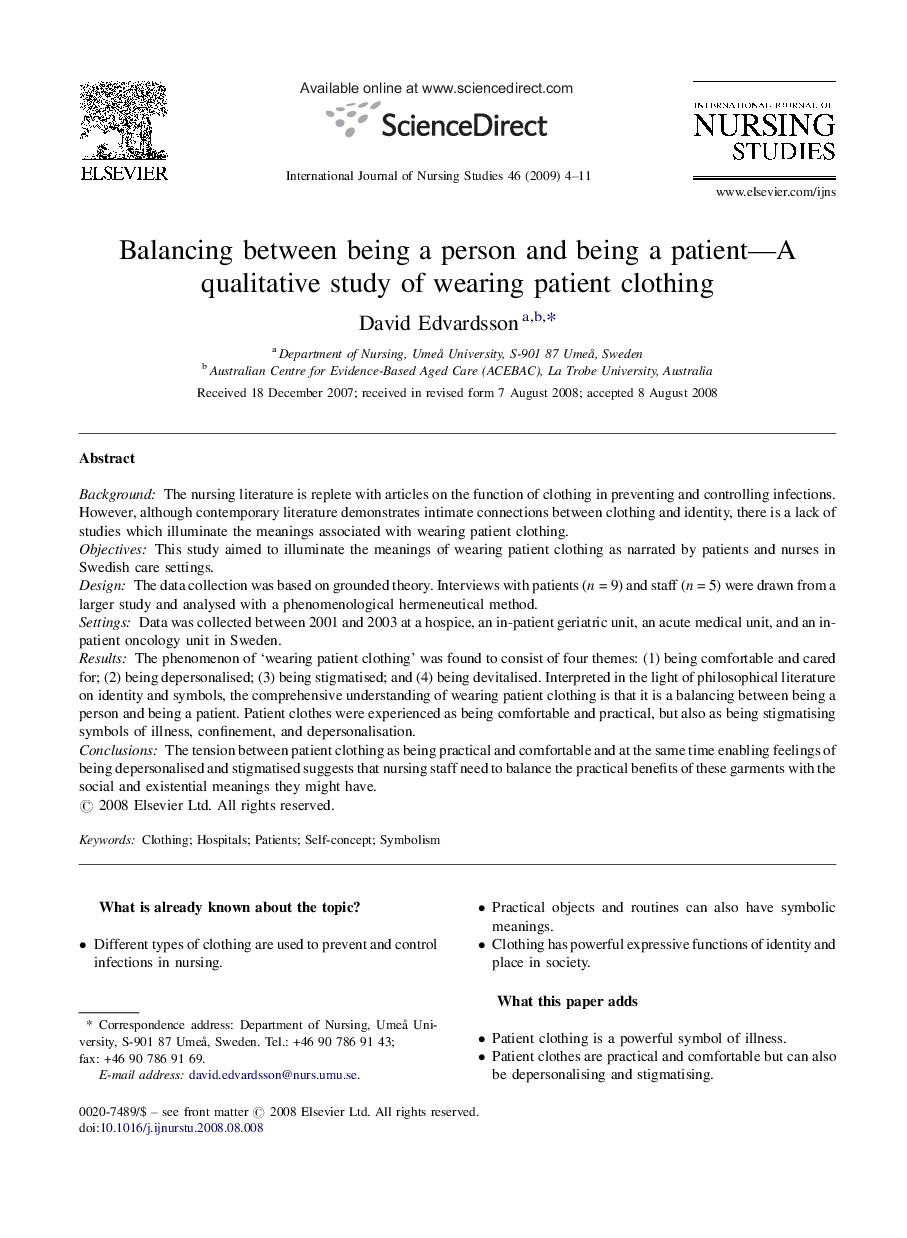| Article ID | Journal | Published Year | Pages | File Type |
|---|---|---|---|---|
| 1076722 | International Journal of Nursing Studies | 2009 | 8 Pages |
BackgroundThe nursing literature is replete with articles on the function of clothing in preventing and controlling infections. However, although contemporary literature demonstrates intimate connections between clothing and identity, there is a lack of studies which illuminate the meanings associated with wearing patient clothing.ObjectivesThis study aimed to illuminate the meanings of wearing patient clothing as narrated by patients and nurses in Swedish care settings.DesignThe data collection was based on grounded theory. Interviews with patients (n = 9) and staff (n = 5) were drawn from a larger study and analysed with a phenomenological hermeneutical method.SettingsData was collected between 2001 and 2003 at a hospice, an in-patient geriatric unit, an acute medical unit, and an in-patient oncology unit in Sweden.ResultsThe phenomenon of ‘wearing patient clothing’ was found to consist of four themes: (1) being comfortable and cared for; (2) being depersonalised; (3) being stigmatised; and (4) being devitalised. Interpreted in the light of philosophical literature on identity and symbols, the comprehensive understanding of wearing patient clothing is that it is a balancing between being a person and being a patient. Patient clothes were experienced as being comfortable and practical, but also as being stigmatising symbols of illness, confinement, and depersonalisation.ConclusionsThe tension between patient clothing as being practical and comfortable and at the same time enabling feelings of being depersonalised and stigmatised suggests that nursing staff need to balance the practical benefits of these garments with the social and existential meanings they might have.
